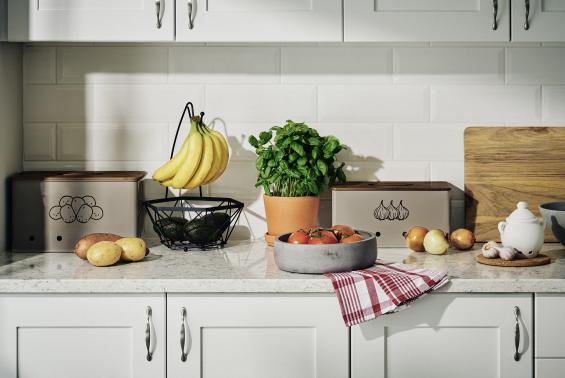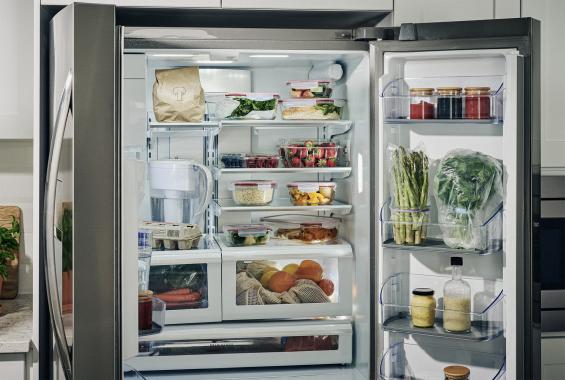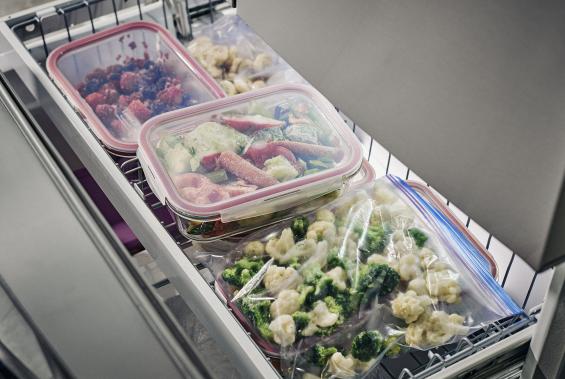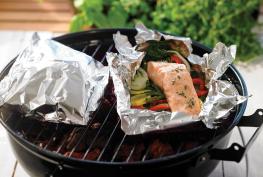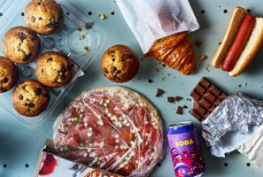Print or share this article
Properly storing vegetables and fruits can help you cut down on food waste, get the most out of the food you buy and prevent foodborne illness.
On this page
Washing
Most fresh vegetables and fruits will stay fresh longer if they’re stored unrinsed. Only rinse produce before preparing, freezing or eating it. Do not use soap or other cleaning products on produce.
Leafy greens are an exception. Rinse leafy greens before storing them.
Storing at room temperature
Some vegetables and fruits should be stored at room temperature. These include:
- bananas
- potatoes
- pineapple
- sweet potatoes
- onions, except green onions
- fresh basil: store in a sealed container; cold temperatures will cause basil leaves to blacken
- garlic: store in a cool, dry, well-ventilated place
Some vegetables and fruits can be stored at room temperature until ripe, and then should be moved to the refrigerator to prolong shelf life. These include:
- kiwis
- pears
- plums
- papayas
- melons
- mangoes
- peaches
- avocadoes
- tomatoes
- rutabaga
- winter squash, such as acorn or butternut squash
Storing in the refrigerator
Some vegetables and fruits will stay fresh longer if they are stored in the fridge. Here are some tips to help your vegetables and fruits last longer in the fridge:
- Store vegetables and fruits in separate crisper drawers.
- Vegetables go in the high humidity drawer.
- Fruits go in the low humidity drawer.
Vegetables
Examples of vegetables that should be refrigerated include:
- peas
- corn
- leeks
- celery
- broccoli
- peppers
- cabbage
- parsnips
- eggplant
- artichokes
- cauliflower
- cucumbers
- leafy greens
- green onions
- summer squash
- Brussels sprouts
- mushrooms: store in a paper bag
- asparagus: keep the stems upright in a small amount of water
- green beans: store in a well-ventilated bag in the crisper drawer
- carrots, beets and radishes: remove their leafy tops, which will spoil faster
- all herbs, except basil: trim off the ends of herb stems and store herbs in a reusable bag or container in a crisper drawer
Tip: Save vegetable trimmings and scraps in a freezer-safe bag. Freeze them until you've collected enough to make a vegetable stock.
Fruits
Examples of fruit that should be refrigerated include:
- apples: keep in a well ventilated bag in a crisper drawer
- grapes
- apricots
- nectarines
- cranberries
- berries, such as blueberries and strawberries: store in a well-ventilated container to help release moisture
- citrus fruit such as lemons, limes and oranges: can be kept at room temperature, but will have a longer shelf life when stored in the refrigerator
Storing in the freezer
Many vegetables and fruits freeze well and can be stored in the freezer for up to 12 months. Stock up on vegetables and fruits on sale or in season and freeze to enjoy year-round. Freeze vegetables in large batches to cut down on preparation time for future meals. Keep frozen fruit on hand to add to different recipes like muffins or as a yogurt topping.
Vegetables
Vegetables with a high-water content such as lettuce and cucumber don’t freeze well. Most other vegetables should be blanched before freezing.
Fruits
Freeze fruits whole or sliced depending on how you’ll use them. Examples of fruits that freeze well include:
- plums
- berries
- bananas
- peaches
- cherries


